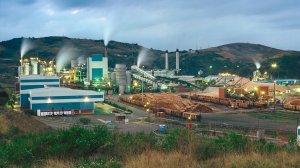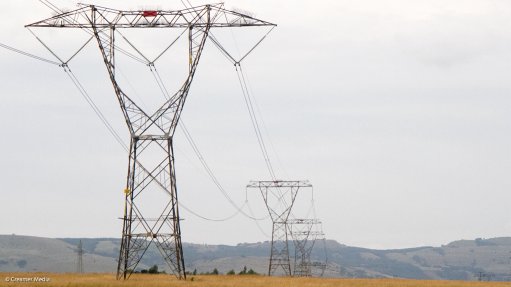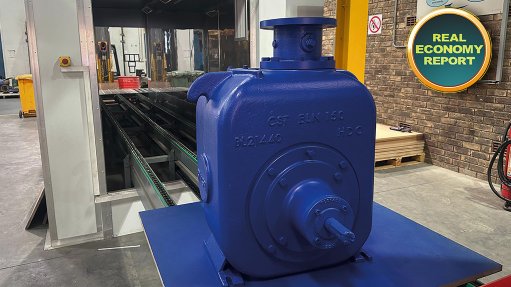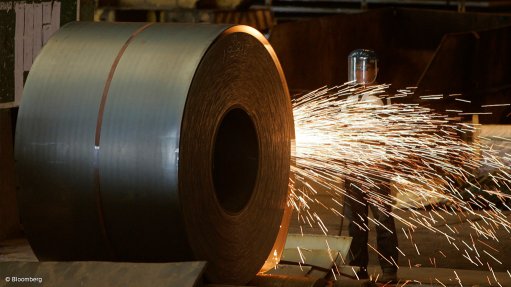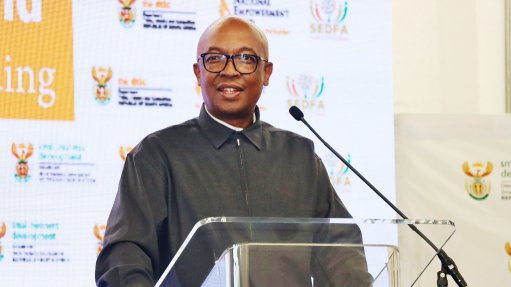Sappi posts solid growth in third-quarter profit
Paper and packaging manufacturer Sappi has improved its operating performance in the third quarter of the year, compared with the same quarter of last year, delivering a 28% increase in profit from $40-million to $51-million.
Earnings before interest, taxes, depreciation and amortisation (Ebitda) grew by 42% year-on-year from $106-million in the third quarter of last year to $151-million in the reporting quarter.
Notably, included in the Ebitda was a positive plantation fair value price adjustment of $3-million.
However, for the nine months ended June 30, Sappi reported a loss of $46-million, compared with a profit of $299-million in the prior comparable period.
Basic earnings per share (EPS) for the third quarter, meanwhile, grew by 29% year-on-year to $0.09, while EPS excluding special items grew by 80% year-on-year to $0.09 apiece.
Sappi generated net cash of $32-million in the reporting quarter, while it had a positive working capital inflow of $44-million and proceeds of $49-million from the sale of the Stockstadt mill, in Germany. This was offset by a cash outflow of $61-million for the closure and restructuring of the Lanaken mill, in Belgium.
The group also spent $108-million in the period on conversion and expansion projects, including a new turbine at the Saiccor mill in South Africa. CEO Steve Binnie tells Engineering News that the group’s spend in South Africa has mostly been on maintenance, but the group is looking to invest more in future.
These investments will involve decarbonisation and possibly renewable energy, as well as boosting its packaging capabilities.
Meanwhile, the positive cash flow generation in the quarter allowed Sappi to reduce its net debt by $26-million to $1.34-billion.
The group has $365-million of cash on hand and $662-million in unused revolving credit facilities.
MARKET COMMENTARY
Binnie says the group’s operating performance in the third quarter was substantially above last year, despite the third quarter typically being the weakest seasonally for the business.
This was also against the backdrop of a still sluggish global economy.
The performance was driven by sustained strong market conditions in the pulp segment, which was somewhat offset by a muted recovery in the paper market.
Sappi produces dissolving pulp (DP), wood pulp, biomaterials and timber, as well as end-use products such as packaging papers, speciality papers, graphic papers, casting and release papers.
Globally, consumer sentiment showed signs of improvement as inflation continued to subside, which provided a boost for packaging and textile markets. However, graphic paper markets generally remained subdued with the recovery post the destocking cycle of 2023 slowing during the quarter.
Market conditions for DP continued to be favourable, supported by tight supply and strong demand, which was enhanced by high downstream viscose staple fibre (VSF) operating rates and low inventory levels.
The hardwood DP spot market price was stable during the quarter, ending the quarter at $942/t.
Pulp sales volumes declined by 5% compared with the prior year and quarter. This was driven by low inventory levels at the beginning of the quarter and lower external high yield pulp sales owing to a scheduled yearly maintenance shut at the Matane mill, in Canada.
DP sales volumes and pricing were roughly in line with the prior year and quarter.
Graphic paper sales volumes increased by 13% compared with the very weak performance of last year, which supported a substantial year-on-year improvement in profitability for the segment, Binnie comments.
However, the gradual market recovery following the destocking cycle of last year slowed during the quarter as underlying demand continues to be suppressed by global macroeconomic challenges and a likely shift in consumer behaviour following the Covid-19 pandemic.
Escalating costs also impacted on margins compared with the prior quarter.
The packaging and speciality papers segment experienced a challenging quarter, Binnie explains, saying paperboard demand in North America rebounded during the quarter, but selling prices came under pressure. The region was further negatively impacted on by the scheduled maintenance shut at the Somerset mill, in the US.
European demand also improved, albeit off a low base. Market sentiment showed modest signs of recovery, particularly in the label and self-adhesive categories.
Containerboard demand in South Africa was negatively impacted by a weaker-than-forecasted citrus fruit season due to adverse weather events. Despite these headwinds, sales volumes were 22% higher year-on-year, and improved by 10% compared with the second quarter of the year.
The positive sales volumes momentum was offset by rising costs and declining prices which negatively impacted profitability of the segment.
Looking ahead, Binnie expects a high level of global macroeconomic uncertainty to continue, but he is confident that DP market conditions remain robust as low downstream VSF inventories and constrained DP supply continue to offer support for prices.
He adds that both VSF and DP prices have trended higher in recent weeks, while the graphic paper market remains suppressed.
The fourth quarter of Sappi’s financial year is generally seasonally stronger and Binnie anticipates further recovery in demand for graphic papers through the last quarter.
Sappi expects its capital expenditure for the year to be slightly below guidance owing to the phasing of projects and will likely total $480-million, including $154-million for the group’s Somerset PM2 conversion and expansion project.
Article Enquiry
Email Article
Save Article
Feedback
To advertise email advertising@creamermedia.co.za or click here
Comments
Press Office
Announcements
What's On
Subscribe to improve your user experience...
Option 1 (equivalent of R125 a month):
Receive a weekly copy of Creamer Media's Engineering News & Mining Weekly magazine
(print copy for those in South Africa and e-magazine for those outside of South Africa)
Receive daily email newsletters
Access to full search results
Access archive of magazine back copies
Access to Projects in Progress
Access to ONE Research Report of your choice in PDF format
Option 2 (equivalent of R375 a month):
All benefits from Option 1
PLUS
Access to Creamer Media's Research Channel Africa for ALL Research Reports, in PDF format, on various industrial and mining sectors
including Electricity; Water; Energy Transition; Hydrogen; Roads, Rail and Ports; Coal; Gold; Platinum; Battery Metals; etc.
Already a subscriber?
Forgotten your password?
Receive weekly copy of Creamer Media's Engineering News & Mining Weekly magazine (print copy for those in South Africa and e-magazine for those outside of South Africa)
➕
Recieve daily email newsletters
➕
Access to full search results
➕
Access archive of magazine back copies
➕
Access to Projects in Progress
➕
Access to ONE Research Report of your choice in PDF format
RESEARCH CHANNEL AFRICA
R4500 (equivalent of R375 a month)
SUBSCRIBEAll benefits from Option 1
➕
Access to Creamer Media's Research Channel Africa for ALL Research Reports on various industrial and mining sectors, in PDF format, including on:
Electricity
➕
Water
➕
Energy Transition
➕
Hydrogen
➕
Roads, Rail and Ports
➕
Coal
➕
Gold
➕
Platinum
➕
Battery Metals
➕
etc.
Receive all benefits from Option 1 or Option 2 delivered to numerous people at your company
➕
Multiple User names and Passwords for simultaneous log-ins
➕
Intranet integration access to all in your organisation




